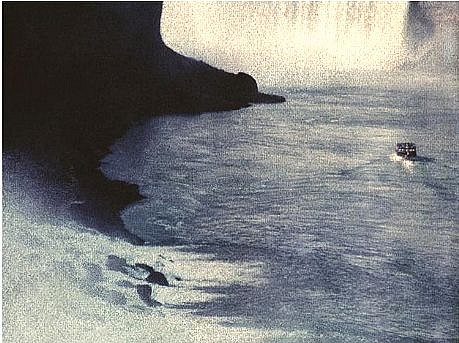PRESS RELEASE

John Huggins, American Landscapes
Sep 20 – Nov 3, 2012
Press Release
John Huggins, American Landscapes
September 20 – November 3, 2012
This stunning new body of work is the culmination of a project John Huggins began in 1995. The large-scale pigmented prints in this exhibition began as 4 x 5 Polaroid transfers, culled from the artist’s personal archive.
There are 17 prints in each edition. In 2008 the “type 59” film used in this process was discontinued due to the demise of the Polaroid Corporation. The “type 59” film needed for this process will with almost certainty never be available again. Like the moments captured in these images, the ability to create them occupied a fleeting moment in time
Huggins is a master of the Polaroid transfer process. He shoots using a 4 x 5 camera, creating a transfer by promptly interrupting the usual Polaroid process of developing a photograph by discarding the actual photograph and instead transferring the still fluid dyes to watercolor paper using a precise recipe consisting of pressure, temperature and time. The result is a unique monoprint. Since the process yields no corresponding negative or positive, the resulting print is irreplaceable. Huggins’ Polaroid transfers unite the artist's hand with photography.
Huggins, who has lived in Los Angeles his entire life, spent chunks of time traveling the American west by car (his mother had a fear of flying) and this he says influenced him greatly. After high school Huggins began road tripping throughout America exploring the landscape and culture of his immediate surroundings and documenting it as he went along. He chooses subjects that are iconic, familiar and in many ways timeless. These are American images that exist in our collective memories yet can be found alive and well in the present.
John Huggins's Polaroid transfer prints are meditations on what it is to be an American. He takes us on a journey through America; the baseball park, Niagara Falls, farmlands, brushfires, surfers in Malibu, skiers in the Rockies and bathers at the Glenwood hot springs. He documents this journey with each stamp of emulsion on paper, making the fleeting moments suddenly permanent. Huggins forces us to stop, examine, and hold on to some of the images that have defined the American experience. Through his eyes we see Americas’ traditions and rituals, its history and foundations.
